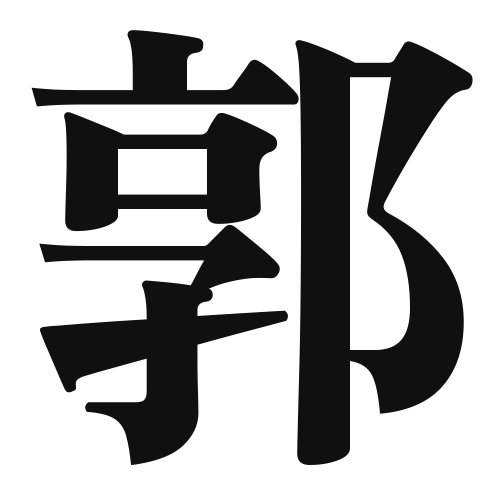1. Overview of Meaning
The kanji “郭” (pronounced “kaku” in Japanese) generally means “enclosure” or “outer wall.” It often refers to a fortified area or a protective boundary around a city or structure.
2. Formation and Radical
The kanji “郭” is a compound character (会意文字) that combines two elements: the radical “阝” (which indicates a location or hill) and “各” (which means “each” or “various”). This combination suggests a place that encloses or surrounds various elements.
The radical “阝” is commonly associated with geographical features or locations, reinforcing the idea of an enclosure.
3. Examples of Usage
Common words and phrases that include “郭” are:
- 城郭 (じょうかく, “joukaku”) – castle enclosure
- 郭公 (かっこう, “kakkou”) – cuckoo (the bird)
Example sentence in daily conversation:
「この城郭は歴史的な価値があります。」
(“This castle enclosure has historical value.”)
4. Synonyms and Antonyms
Similar kanji with related meanings include:
- 囲 (い, “i”) – to enclose or surround, which emphasizes the action of enclosing rather than the structure itself.
Antonyms include:
- 開 (ひらく, “hiraku”) – to open, which represents the opposite action of enclosing.
5. Cultural and Historical Background
The kanji “郭” has significant ties to Japanese culture, particularly in the context of historical architecture. Many ancient Japanese castles featured “郭” as part of their defensive structures.
Proverbs and idiomatic expressions related to “郭” are less common, but the concept of protection and enclosure is often reflected in discussions about safety and security in various contexts.
